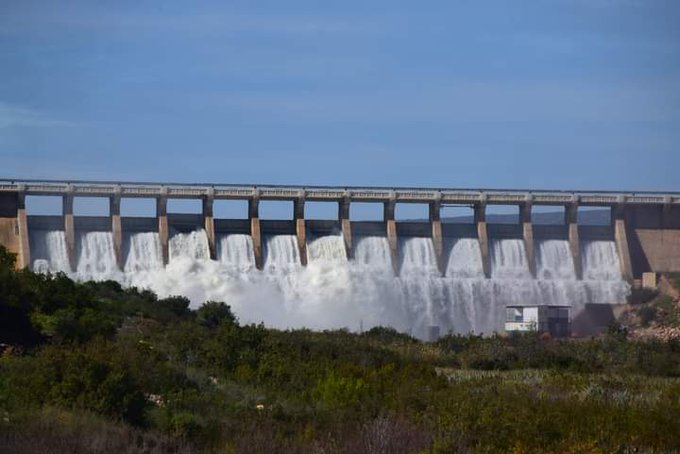The Clanwilliam dam, in the Matzikama municipality of the Western Cape, is overflowing after two of its 13 sluices were opened to release tonnes of water into the Olifants river. The dam, which was established in 1935, was created to provide irrigation water to the agricultural region downstream.
On August 23, the Water and Sanitation Department announced that the dam had reached the 100% mark as a result of the recent rainfall in the Western Cape. Eager locals captured images of the dam’s flow in action.
Nog pragtige foto’s van Clanwilliam dam = 100%
{31 Augustus 2020}Dankie vir die deel Cederberg ClickClick
? Licia Erasmus#Clanwilliam
Posted by Clanwilliam Toerisme on Monday, 31 August 2020
A long-delayed project to raise the existing Clanwilliam Dam wall to 13-metres will be completed by March 2023, and cost an estimated R3.5-billion. This is one of the 10 mega projects identified by the Department that is aimed at enhancing water security and the revival of SA’s economy.
The Water and Sanitation Department says the project will benefit three regions – the West Coast District Municipality, Cederberg and Matsikama Local Municipalities in terms of additional income due to additional irrigation activities, economic development and also enhance the tourism potential.
Captonians rejoiced at the news that total capacity of dams supplying the Cape Town metro increased to 90,7% for the week of 24 to 30 August 2020, a 2,7% rise from the 88% of the previous week. Dams are close to full for the first time since 2013/2014.
The fullest dams are Berg River at 100.8% capacity, Steenbras Upper at 99% and Steenbras Lower with 98.8%. The rest of the dams are all above 86% capacity.
However, the City cautions that a reduction in tariffs and easing of water restrictions are dependent on other factors beyond the state of the province’s dams.
Picture: Twitter






